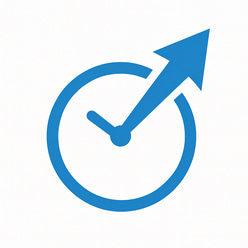How to Build an Art Blog That Earns from Ads, Affiliates, and Downloads
CAREER FREEDOM & MONEY
5/22/20253 min read


Introduction: Why an Art Blog Is More Than Just a Portfolio
As an artist, you might already share your work on Instagram, Etsy, or in an online portfolio. But if you’re not blogging, you’re leaving long-term income and growth opportunities on the table. An art blog is more than a digital diary—it’s a traffic engine, trust builder, and monetization platform rolled into one.
This guide walks you through how to launch, grow, and profit from an art blog using ad revenue, affiliate marketing, and digital downloads. Whether you’re a painter, illustrator, calligrapher, or multi-disciplinary creator, your words and visuals can earn for you—even while you sleep.
Chapter 1: Why Start an Art Blog in 2025?
Benefits of an art blog:
Builds long-term organic traffic through SEO
Grows your personal brand
Creates a monetizable platform you own (unlike social media)
Helps establish you as a thought leader or educator
Opens up partnerships, licensing, and product opportunities
Best types of blogs for artists:
Process-focused (e.g., “How I create my digital illustrations”)
Educational (e.g., “Top 10 watercolor brushes for beginners”)
Inspirational (e.g., “Behind the scenes of my solo show”)
Business-focused (e.g., “How to price your commissions”)
Chapter 2: Setting Up Your Art Blog the Smart Way
Step-by-step setup guide:
Choose a domain name (yournameart.com or a brand-specific name)
Register hosting (SiteGround, Bluehost, or Cloudways)
Install WordPress or use a platform like Ghost or Squarespace
Select a clean, minimalist theme (focus on visuals)
Install essential plugins (SEO, security, analytics)
Must-have pages:
About Me
Portfolio or Gallery
Blog (main hub for content)
Shop or Resources
Contact
Chapter 3: Planning and Writing SEO-Friendly Content
Keyword strategy:
Use Ubersuggest, Keywords Everywhere, or LowFruits
Target long-tail keywords like “best brushes for gouache painting” or “how to scan hand-drawn art”
Content calendar:
Aim for 1–2 blog posts per week
Mix evergreen tutorials with time-sensitive posts
Blog post structure:
Catchy title (with keywords)
Clear intro with a hook
Step-by-step body with visuals
Call to action (comment, download, subscribe)
Types of posts to write:
Tutorials and how-tos
Product reviews (great for affiliate links)
Studio tips and organization
Business insights for artists
Case studies and personal stories
Chapter 4: Monetizing with Ad Networks
Once your blog gets traffic, ad networks become a source of recurring passive income.
Recommended networks by traffic level:
Google AdSense (beginner, 0–10K monthly views)
Ezoic (intermediate, 10K+ monthly views)
Mediavine (premium, 50K+ monthly sessions)
Tips to increase ad revenue:
Write longer posts (1,500–2,500 words)
Optimize for SEO to grow organic views
Use sticky ads or videos where allowed
What to expect:
$2–$25 per 1,000 views depending on niche and location
Chapter 5: Earning Through Affiliate Marketing
What is affiliate marketing? Recommending products/services with a special link. When readers buy, you earn a commission.
Top affiliate programs for artists:
Amazon Associates (art supplies)
Blick Art Materials Affiliate Program
Creative Market (fonts, templates)
Teachable or Skillshare (art classes)
Where to insert affiliate links:
Product reviews
Tools I use pages
Resource roundups
Tutorial supply lists
Ethical tips:
Only recommend products you use and trust
Disclose affiliate links (FTC requirement)
Add value beyond the link—explain why it’s helpful
Chapter 6: Selling Digital Downloads on Your Blog
Examples of popular digital products for artists:
Printable wall art
Brush packs (Photoshop, Procreate)
E-books or mini guides
Planning sheets or sketch templates
Online course previews or cheat sheets
Selling platforms to integrate:
Gumroad
SendOwl
WooCommerce
Shopify Lite (button embeds)
How to promote downloads:
Add shop CTAs to blog posts
Offer free downloads for email sign-ups
Create a dedicated “shop” page on your site
Chapter 7: Growing Traffic and Building an Audience
Organic traffic sources:
Google SEO (top priority for long-term)
Pinterest (visual content performs well)
YouTube (link blog in video descriptions)
Social traffic:
Instagram stories with swipe-ups or link stickers
Facebook groups for artists or crafters
Email marketing:
Use ConvertKit, Flodesk, or Mailchimp
Offer a lead magnet (e.g., free brush pack)
Send newsletters 2–4x/month
Chapter 8: Scaling and Automating Your Blog Business
Content batching:
Write 3–4 posts in one sitting
Schedule using WordPress, Buffer, or Tailwind
Monetization scaling tips:
Repurpose blog posts into videos, eBooks, or courses
Build a resource hub and sell bundles
Offer exclusive paid content (e.g., membership tiers)
Track what works:
Google Analytics
Affiliate dashboards (track clicks and conversions)
Email open rates and download activity
Conclusion: Your Blog Is Your Art Business Engine
Building a blog as an artist doesn’t just grow your brand—it unlocks income streams that reward consistency and creativity. Whether you’re selling downloads, recommending products, or earning from ads, every blog post is a long-term asset working for you.
Don’t wait for a perfect portfolio or big following. Start now, learn as you go, and watch your creative content compound over time.
Call to Action: Start Your Art Blog This Week
Pick a domain name. Sign up for a hosting plan. Write your first blog post about a recent artwork or technique. Add a signup form with a small freebie—like a desktop wallpaper or sketchbook prompt.
That one post could be the beginning of your most profitable creative platform yet.
Beyond9to5Life.com
"Empowering Others Is The Most Effective Form of Service to Humanity"
Connection
Momentum
info@beyond9to5life.com
772-228-1494
© 2025. All rights reserved.
